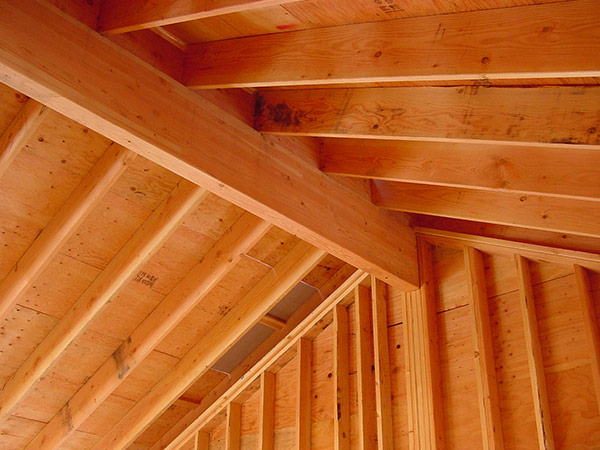

Glulam: A Weird Word, but a Key Construction Material
Your contractor knows that glulam beams are important in the construction process, but do you know why? A glulam is a type of engineered wood product that dates back to its invention in the 1860s. The word "glulam" stands for "glue laminated timber." First patented in Germany in the 1870s, the glulam has become an integral part of construction plans where strong, lightweight, water-resistant wood is needed. Key to its superior strength is that its wood pieces are glued in the same grain direction. This structural distinction means it can easily expand or contract in warm or cool weather.
How is Glulam Made and Graded?
Glulam is an engineered wood product, made by applying heat and pressure to carefully planed, laminated wood, and glued together with their layers parallel. While not popular in all construction situations, glulams are a great specialized option. When selecting glulam for your project, you can explore four different “appearance classifications.”
Note: While the term "grades" is used in building materials, for glulams, grades refer to appearance rather than strength or quality. Because glulams are frequently used in places where they are visible and form an integral part of the building’s design, the grading system refers to the overall aesthetic appeal.
- Premium Appearance: The highest classification, this type of glulam has smooth exposed faces with no visible knots or other imperfections.
- Architectural Appearance: A high classification, this type may contain knots or other imperfections that have been filled with a matching wood-tone filler material. This type of glulam is frequently used in general construction and sometimes is labeled as “stock beams” in supply lists. They can be used in exposed beams as well as concealed areas of construction.
- Industrial Appearance: These are frequently used in warehouses or other commercial buildings where strength and durability is required, but appearance isn’t a problem. Still, any voids or knots are filled with appropriate wood fillers. A sub-classification of this category Industrial-L Appearance includes laminated veneer lumber on outer laminations.
- Framing Appearances: Typically used in home building, this type is used in residential construction where glulam is used in combination with other types of lumber in roof, flooring, or wall construction. A subcategory Framing-L Appearance also exists, with similar properties to Industrial-L glulam.
Typical sizing includes standard and custom lengths and widths, depending on your project’s needs. For framing glulam, sizes are compatible with traditional construction timbers, and come in several widths:
- 3.5"
- 5.5"
- 8.5"
Typical stock beams include these common widths:
- 3.125"
- 3.5"
- 5.125"
- 5.5"
- 6.75"
For commercial construction, where spans can be quite large and unique, custom sizing is often required. Really, the size and length of your glulam are only limited by the ability to transport the finished product to your jobsite.


How Are Glulam Beams Used?
Because they’re so strong and flexible, glulams make a great dramatic arch – you might see them in large wide ceilings like modern church construction, pools, gymnasiums, and even warehouses. Glulams are frequently used as beams or columns in structures. You might see visible glulam in large commercial structures with wide arching ceilings supported by exposed beams. In modern construction, they are turned to for precise physical support as well as aesthetic beauty.
Because glulam is made from wood, you can also specify a certain type of tree for your project. Glulam is frequently made from wood harvested from sustainable forests, including douglas fir, southern pine, Alaska cedar, Port Orford cedar, and spruce.
Why Glulam is Used
The amazing properties of glulam bring it strength and versatility that’s far greater than lumber made from a single piece of wood. Compared to a piece of timber, glulam’s lightweight, laminated layers make it super strong. And not only that, but it’s also even stronger than metal construction beams in some cases.
In fact, the strength-to-weight ratio shows that glulam is about three times stronger than steel. This is due to its multilayered construction and the properties of the materials which resist corrosion. In large indoor pools, for example, where moisture and chemicals are present, a ceiling structure made from glulam will resist corrosion over time far better than one that is made from steel.
In case of fire, glulam – even though it’s made from wood – does not require the same protective treatment and boxing in that steel beams do to prevent distortion and bending. During the manufacturing process, glulams can be treated to increase their fire resistance. Glulam burns more slowly than wood and can maintain its strength even in the presence of flames.
Talk with the Building Materials Experts About Glulams
Whether you're planning a residential or commercial space big or small, glulams can provide your structure with beauty as well as strength. Talk with our estimating department or stop by your local McCoy’s for help with your next project.

